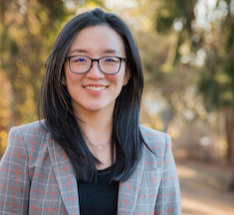Opening Remarks
The organizing committee of ICLR 2022 would like to welcome everyone to the virtual conference. In this opening remarks, we will discuss the overall program of the conference, the review process, the best paper award, the DEI outreaching activity, and the new blog track.
There is no live Q&A for this event.
Leveraging AI for Science
Scientific advances over the last several centuries have not only expanded our understanding of the world, but have also raised the standard of living for many people across the globe. However, there are still massive challenges facing humanity, as evidenced by climate change and the COVID-19 pandemic. One of the difficulties of modern science is to make sense of the vast amount of information we’ve gathered about the world - from the Large Hadron Collider to massive genome projects—it’s impossible for any individual person to comprehend it all.
In this talk, I will discuss how AI (and techniques like Machine Learning) can contribute to progress on challenging and important problems in a wide range of scientific disciplines - from genomics and structural biology to quantum chemistry and even pure mathematics.

Facilitating a smoother transition to Renewable Energy with AI (AI4Renewables)
With rapidly rising carbon emissions globally, it is the need of the hour to transition to clean energy sources – such as wind, solar etc. However, renewable energy sources like wind turbines are complex engineering systems that regularly suffer from operational inconsistencies and failures, leading to downtimes and energy production short of the full potential. AI can help support the operations & maintenance (O&M) of such energy systems, helping predict incipient failures and also suggesting maintenance actions to fix/avert faults. This can help bring down O&M costs as well as reduce downtimes and increase availability of the energy systems.
At present, there is very limited focus on leveraging AI in the renewables domain. This social will aim to emphasise the opportunities (e.g. fault prediction, suggesting O&M activities, power forecasting etc.) and challenges (e.g. data confidentiality in the industry, lack of historical failure data etc.) in applying AI for smoother transition to clean energy, with various avenues such as transfer learning and natural language generation to ensure trustworthy and reliable decision support. The social will focus on a short presentation from the organisers, followed by a panel discussion from invited experts on AI for renewable energy followed by open Q/A on first day, and a fully informal/friendly socialising discussion on second day.
AI arrived in our lives, making important decisions affecting us. How should we work with this new class of co-workers? The goal of Interpretability is to engineer our relationships with AI, in part by making tools to produce explanations from AI models. But I argue that we also need to study AI machines as scientific objects, in isolation and with humans. Doing so not only provides principles for tools we make, but also is necessary to take our working relationship with AI to the next level. Our ultimate goal is a language that will enable us to learn from and be inspired by AI. This language will not be perfect– no language is–but it will be useful. As human language is known to shape our thinking, this will also shape us and future AI.

LatinX in AI (LXAI) Social @ ICLR 2022
This LatinX in AI (LXAI) social is aimed at LatinX individuals working on or interested in AI with a goal to increase the visibility of researchers of LatinX origin. Those already working in AI will have the opportunity to connect with fellow LatinX and make their own work known, while those new to the field will benefit from the scientific exchange, guidance, and advice of researchers with similar backgrounds. Participants will be able to engage in discussions about AI (formal and informal) and to share their thoughts on how to increase the presence of LatinX in AI.
During this social, we’ll feature invited talks from prominent LatinX in AI community members and host roundtable discussions facilitating conversations among attendees.
WiML Virtual Social
A 1 hour panel and 1 hour socializing event. The panel will be featuring ML researchers at various career stages who will talk about their experience networking, job hunting, collaborating and/or starting a new position.